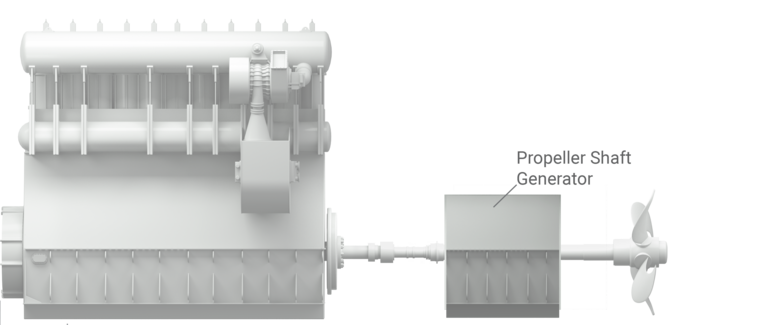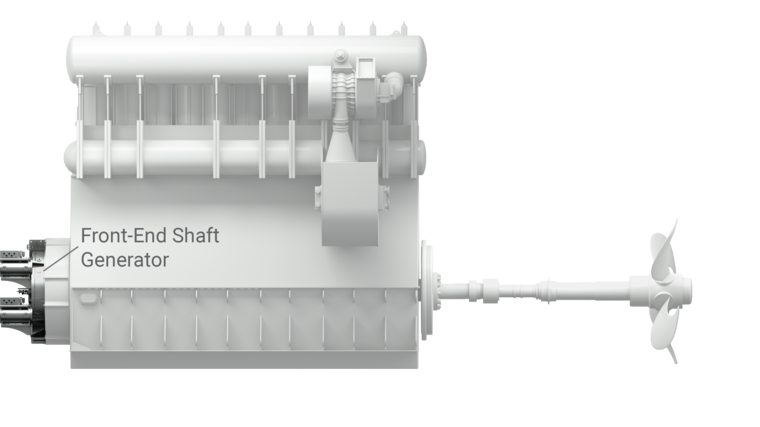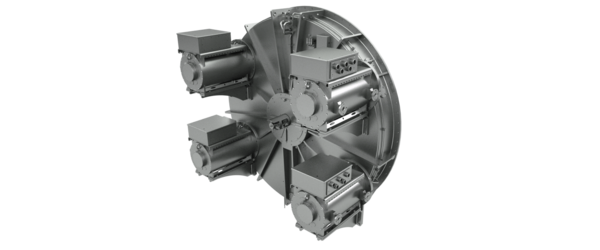Shaft generators draw energy from the main engine to power the on-board electrical consumers. Comparing this technology with the alternative to use Gen-Sets to produce electricity, fuel savings in the magnitude of 3 to 7 percent can be achieved. This is due to the fact, that the shaft generators are not using any fossil fuel but utilize the highly efficient main engine output. Therefore, shaft generators are an effective measure in saving diesel and emission, thus support the compliance to regulations as EEDI and EEXI.
This explains why shaft generators are increasingly pivotal components in maritime engineering and have undergone significant evolution since their inception. Integral to the generation of electricity aboard ships, these devices have transitioned from being bulky, less efficient units to modern marvels of engineering. This article delves into the history of shaft generators, emphasizing their developmental milestones and the latest innovations in the field.
Early Beginnings
The concept of shaft generators emerged in the 60ties of the 20th century, driven by the need for efficient power generation on ships. Early versions were characterized by their large size and relatively simple mechanics. They were typically driven by the ship's main engine and connected to the propeller shaft, converting mechanical energy into electrical energy. This process was essential for powering various shipboard systems and equipment.

Advancements and Improvements
Over the decades, technological advancements led to significant improvements in shaft generator systems. The focus was on enhancing efficiency, reducing size, and improving the reliability of these systems. During this period, the technology evolved from fixed-speed generators to more sophisticated variable-speed models. This change allowed for more flexibility and efficiency in power generation, catering to the varying electrical load demands aboard ships.
Breakthrough: Variable Speed Shaft Generators
The advent of variable speed shaft generators marked a pivotal point in the history of this technology. These generators allowed for more efficient power generation by adjusting their speed according to the ship's operational needs. This innovation not only enhanced fuel efficiency but also reduced emissions, aligning with the growing environmental concerns and regulations in the maritime industry.
Still a downside was that shaft generators were mounted on the propeller shaft. Due to the size of such a system and the limited space in stern, such a system was not always suitable. While this was a huge challenge for new projects it was a roadblock for retrofitting ships already in operation. Such a projects was a big surgery operation and thus not pursued.
Latest Developments: Integration with Main Engine Crankshafts
The newest development in shaft generator technology is a significant leap forward. These modern shaft generators are now directly connected to the main engine's crankshaft. This direct connection represents a paradigm shift from the traditional method of mounting generators in the stern of the ship. This integration has several advantages:
Elimination of Cumbersome Stern Mounting: Traditional stern-mounted generators required significant space and complex installations. The new design eliminates this requirement, simplifying the installation process.
Ease of Servicing: With the direct connection to the crankshaft, servicing and maintenance of the shaft generator become more straightforward, reducing downtime and operational costs.
Compact Design: The modern shaft generator systems are much smaller in size, contributing to better space utilization within the ship.
Enhanced Efficiency: By leveraging the main engine's power more effectively, these generators optimize energy use, leading to improved overall efficiency of the ship's operations.
Enabling Retrofitting: The compact design, low weight, better accessibility and the easier assembly is a big change and supports the retrofit of ships.

Conclusion
The evolution of shaft generators is a testament to the continual advancements in maritime technology. From their humble beginnings to the latest innovations, these systems have become increasingly efficient, compact, and environmentally friendly. The direct connection of shaft generators to the main engine's crankshaft is not just a technological advancement but a revolution in the way power is generated on ships. This development paves the way for more efficient, reliable, and sustainable maritime operations in the future.
We are proud that our newest generation, the front-end shaft generator IFPS does contribute to lower emissions and that this smart system is so well received by ship owners - whether for new builds or sailing ships.
The compact design and efficiency of the new generation of shaft generators is a kind of a game changer, especially for our customers who want to retrofit their existing fleet.
Take a look at related stories and products to shaft generators.

In case you have any question in regard to Condition Monitoring get in touch with our experts from the marine business.


